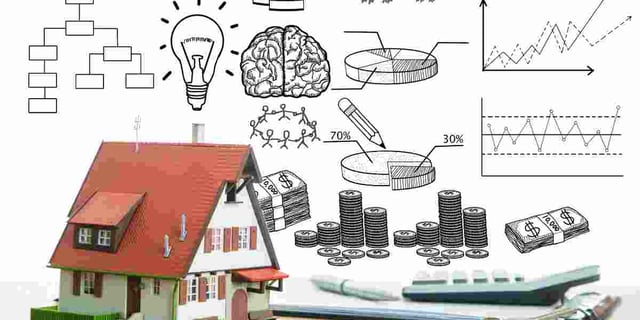Mastering Your Finances with Effective Debt Management
An essential component of achieving financial freedom is utilising effective debt management strategies. Understanding your debt and debt levels is important to effectively managing it.
While some debt is necessary, and can even be good for your financial health, too much debt can leave you overwhelmed and struggling to get to the end of the month. If you have too much debt, you may be considered over-indebted.
Over-indebted meaning
If you are over-indebted, you are unable to have a decent living budget and pay for all your debts with your income.
A few other signs you may be over-indebted:
- You’ve received a letter of demand, also known as a Section 129 Notice.
- You’re spending more than 50% of your salary on debt.
- You're thinking of getting a payday loan to cover your debts for now.
Read: Urgently need a payday loan in South Africa?
Still not sure if you’re over-indebted? Take our quiz to find out if you’re over-indebted now.
What is effective debt management?
Effective debt management involves reducing your reliance on debt, and where possible, paying off that debt to improve cash flow. To do this, you will need a debt management plan.
What are the three methods of debt management?
If you are looking to manage your finances while being in debt, there are three methods you may consider:
-
The Snowball Method
- With this method, you list all your debts.
- You then identify the smallest debt.
- From here, you will then pay a little more on the smallest debt each month until you’ve paid it in full.
- Once you’ve successfully paid off your smallest debt, you will move on to the next debt. You will then add the money you used to pay for your first debt to the next smallest debt installment. Do this until you’ve paid all your debts.
-
Debt counselling (debt review)
Debt counselling, also referred to as debt review, is a debt relief measure that was introduced by The National Credit Act. All of the practices, including the fees, are regulated by the National Credit Regulator (NCR).
How does debt counselling work in South Africa?
Registered Debt Counsellors will first determine whether or not you are over-indebted. They will do this by conducting a financial assessment based on your income and your expenses.
Negotiating with your creditors is the next step. Debt Counsellors will contact your creditors to negotiate reduced interest rates on your loans.
They will then put together a restructured repayment plan where you will only pay ONE reduced monthly instalment for all your debt. Unlike a debt consolidation loan, you will not have to take out more debt.
This repayment plan will be taken to court where a court order will be granted so creditors can no longer take legal action against you.

How much does a Debt Counsellor cost?
Like any service, there are fees involved with the debt counselling process. It’s not free. Usually, your debt counselling fees are equivalent to the first two months instalments of your debt review process. This means that there isn't one fee that everyone is charged for debt counselling. This fee will be dependent on your total debt amount and how long your debt review process will be. There are, however, strict regulations in place for the maximum amounts Debt Counsellors are allowed to charge in South Africa.
-
Debt Avalanche Method
- The debt avalanche method is a popular debt repayment strategy that focuses on paying off debts with the highest interest rates first.
- With the debt avalanche method, you prioritise paying off the loans or credit cards with the highest interest rates, while making minimum payments on the others. By tackling high-interest debts first, you can save a significant amount of money in the long run.
- Here's how it works: let's say you have multiple debts, such as a credit card with a 20% interest rate, a personal loan with a 15% interest rate and a car loan with a 10% interest rate. With the debt avalanche method, you would focus on paying off the credit card first, as it has the highest interest rate. Once that is paid off, you would move on to the personal loan, and finally, the car loan.
- By eliminating the high-interest debts first, you not only reduce the amount of interest you'll pay over time but also free up more money to put towards your other debts. This method allows you to gain momentum as you pay off each debt, motivating you to continue on your debt-free journey.

